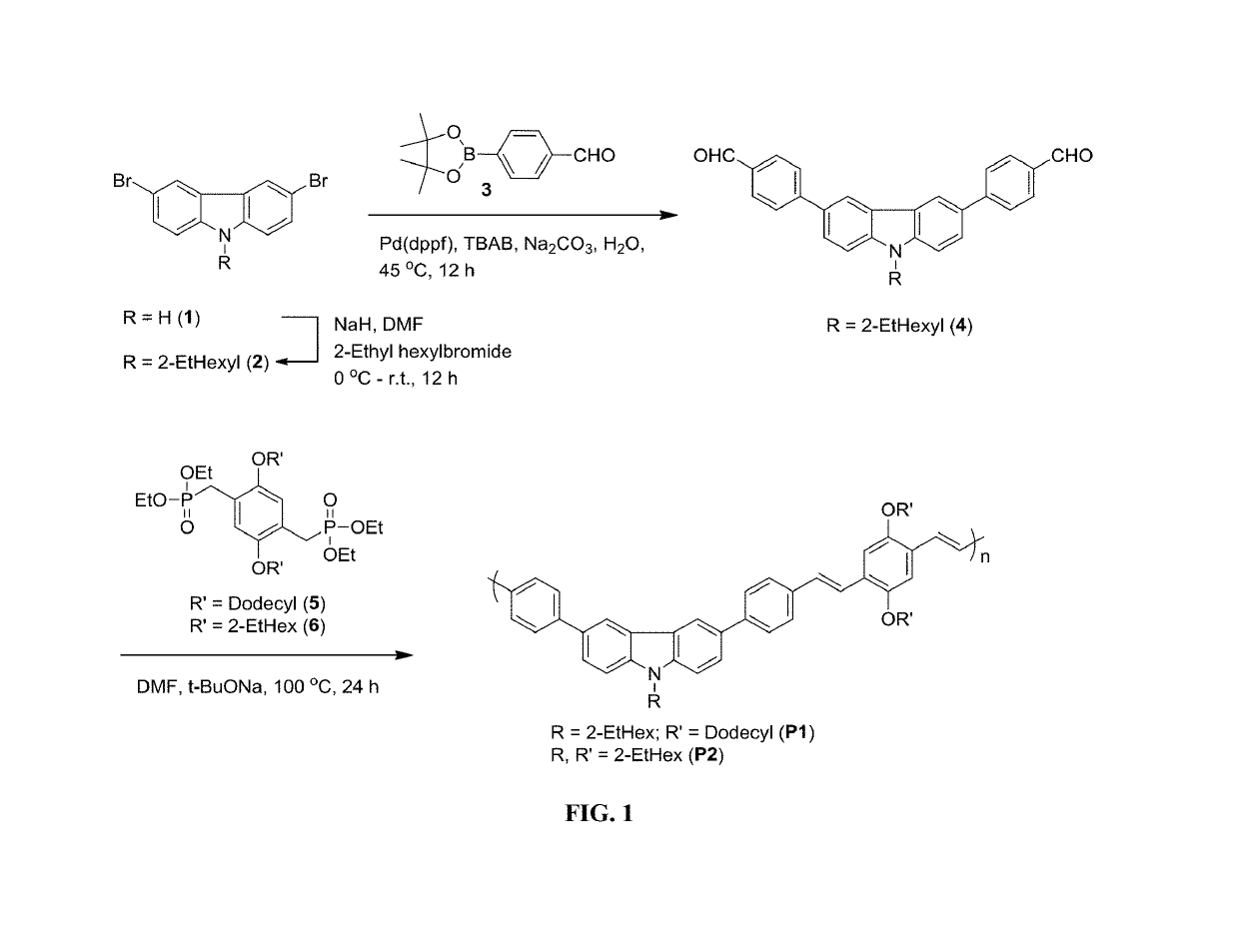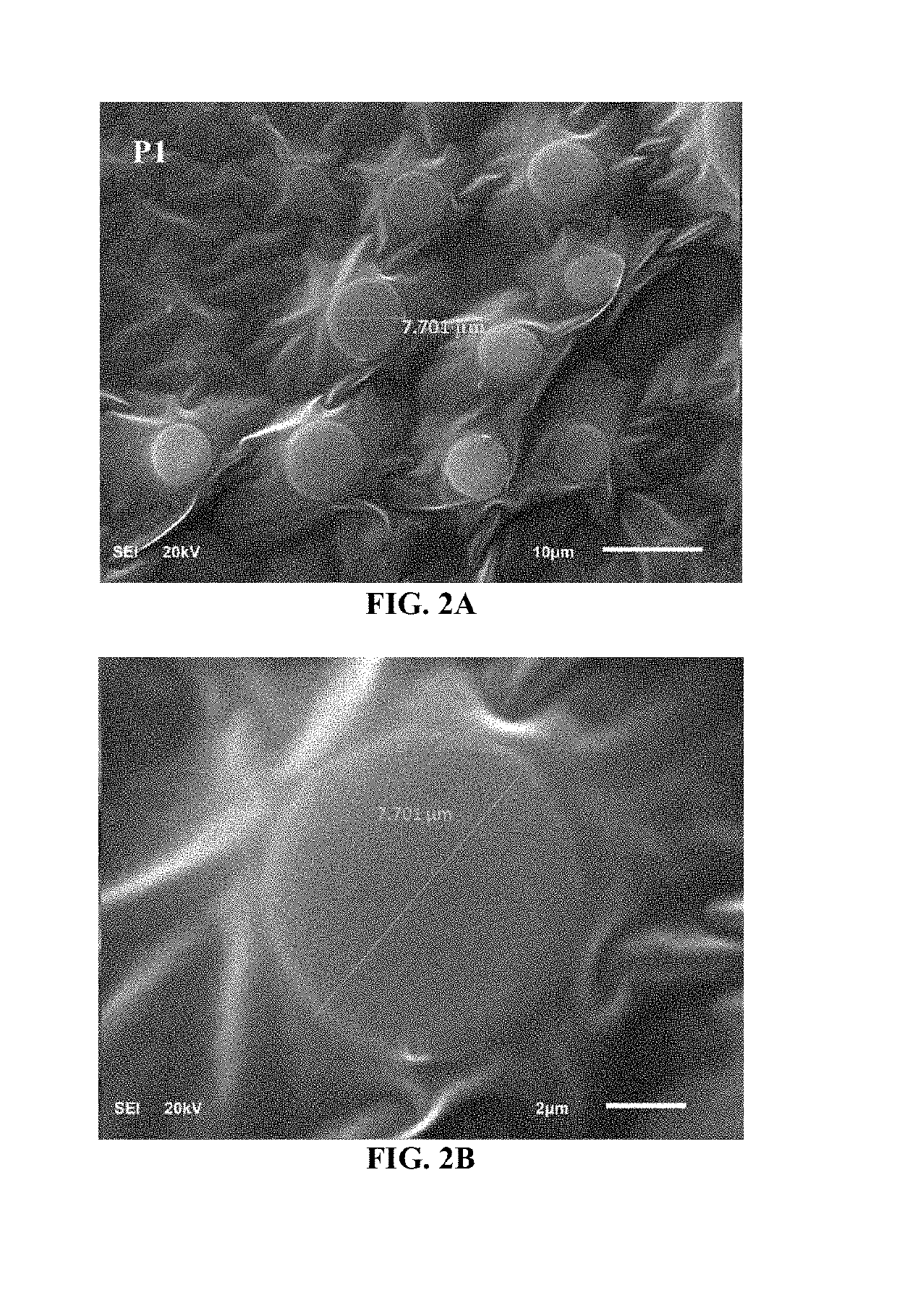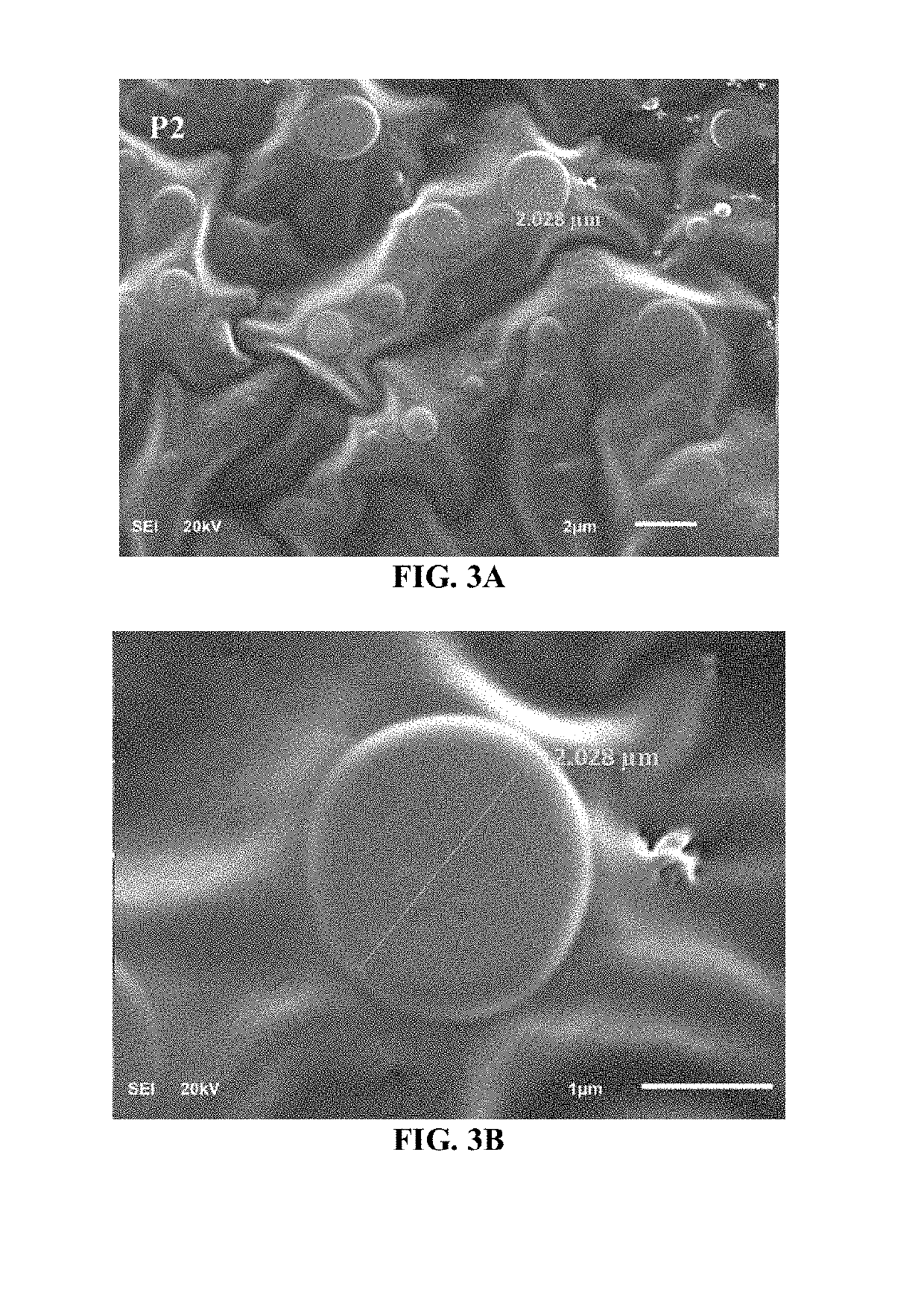Copolymer, a method of synthesizing thereof, and a method for producing hydrogen gas
a technology of copolymer and hydrogen gas, applied in the field of copolymer, can solve the problems of limiting the efficiency of energy delivery, unideal for some common applications, and photocatalytic systems with co-catalysts
- Summary
- Abstract
- Description
- Claims
- Application Information
AI Technical Summary
Benefits of technology
Problems solved by technology
Method used
Image
Examples
example 1
Synthesis of 4,4′-(9-(2-ethylhexyl)-9H-carbazole-3,6-diyl)dibenzaldehyde (4)
[0122]Toluene (3 mL) was added to a suspension of carbazole 2 (0.30 g, 0.69 mmol), boronic ester 3 (0.40 g, 1.7 mmol), tetrabutylammonium bromide (0.44 g, 1.36 mmol) and Na2CO3 (0.28 g, 2.64 mmol) in deionized water (4 mL). The nitrogen gas was bubbled through the reaction mixture gently for 3 minutes followed by the addition of [PdCl2(dppf)](0.082 g, 0.1 mmole). The mixture was then heated for 12 hours at 45° C. After cooling to room temperature, the reaction was filtered through a pad of celite and the filtrate was washed with ethyl acetate (20 mL). The filtrate was transferred into a separatory funnel and washed with water (10 mL). The organic layer was separated and washed with brine (10 mL), dried over Na2SO4 and evaporated under reduced pressure. The crude product (a dark yellow oily material) was purified by column chromatography (ethyl acetate / hexane 15:85) to give the title compound 4 as a light yel...
example 2
Synthesis of P1
[0123]Sodium tert-butoxide (0.20 g, 2.12 mmol) was added to a solution of dialdehyde 4 (0.20 g, 0.42 mmol) and diphosphonate 5 (0.31 g, 0.42 mmol) in anhydrous DMF (20 mL) under nitrogen atmosphere. The mixture was then stirred for 24 h at 100° C. The reaction was cooled to room temperature, poured over 100 mL of methanol and then centrifuged. The solvent was decanted and the residue was re-dissolved in THF and successively re-precipitated from methanol, isopropanol, and hexane to get the final product as a brownish red solid (0.21 g, 53%). 1H-NMR (500 MHz, CDCl3): δ 0.84-0.96 (m, 12H), 1.20-1.43 (m, 40H), 1.58 (bs, 4H), 1.92 (bs, 4H), 2.12 (bs, 1H), 4.10 (bs, 4H), 4.22 (bs, 2H), 7.19 (bs, 2H), 7.48-776 (m, 14H), 8.41 (bs, 2H).
example 3
Synthesis of P2
[0124]P2 was synthesized following the same procedure adopted for the synthesis of P1 using monomers 4 and 6 to afford P2 as a light yellow solid (0.24 g, 55%). 1H-NMR (500 MHz, CDCl3): δ 0.90-1.04 (m, 18H), 1.41-1.86 (m, 27H), 2.12 (bs, 1H), 4.01 (bs, 4H), 4.22 (bs, 2H), 7.19 (bs, 2H), 7.46-7.76 (m, 14H), 8.42 (bs, 2H).
PUM
| Property | Measurement | Unit |
|---|---|---|
| Fraction | aaaaa | aaaaa |
| Time | aaaaa | aaaaa |
| Thickness | aaaaa | aaaaa |
Abstract
Description
Claims
Application Information
 Login to View More
Login to View More - R&D
- Intellectual Property
- Life Sciences
- Materials
- Tech Scout
- Unparalleled Data Quality
- Higher Quality Content
- 60% Fewer Hallucinations
Browse by: Latest US Patents, China's latest patents, Technical Efficacy Thesaurus, Application Domain, Technology Topic, Popular Technical Reports.
© 2025 PatSnap. All rights reserved.Legal|Privacy policy|Modern Slavery Act Transparency Statement|Sitemap|About US| Contact US: help@patsnap.com



